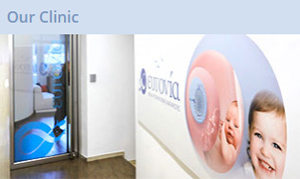The development of array Comparative genomic hybridization (a-CGH) for preimplantation genetic diagnosis (PGD) provides useful information on the frequency and type of anomalies in gametes and embryos. The technique allows screening of all the chromosomes, contrary to the technique of FISH, which evaluated only a limited number of chromosomes (usually X, Y, 13, 16, 18, 21, 2) and can be applied at the stage of the mature oocyte (biopsy of 1st polar body), zygote (biopsy of 1st and 2nd polar bodies), day-3 embryo (biopsy of one blastomere) or blastocyst (trophectoderm biopsy). a-CGH showed that 20-30% of oocytes are aneuploid in women aged 20-30, while aneuploid oocytes from women over 40 are 50-80%.
The technique’s major advantage is that allows the identification of aneuploidies, deletions, duplications and/or amplifications of any locus represented on an array. It has also proven to be a powerful tool for the detection of microscopic chromosomal anomalies in individuals with idiopathic mental retardation and various genetic abnormalities. Several large-scale studies have demonstrated that a-CGH has a 10%–20% detection rate of chromosomal abnormalities in children with mental retardation/developmental delay with or without congenital anomalies; only 3%–5% of these abnormalities would be detectable by other means. It may also provide accurate information regarding the extent and possible implications of the identified genetic aberrations.
Therefore, PGS using a-CGH is an important development of molecular genetics. The technique can lead to increased pregnancy rates because it can detect chromosomal abnormalities with high accuracy, resulting in the transfer of healthy embryos; efforts are being made to improve the technique even further, so that we can gain information on the chromosomal complement of all embryos, more quickly and with great accuracy. In addition, it is a promising method in cancer research, as well as the diagnosis, classification and prognosis of various malignancies.






























